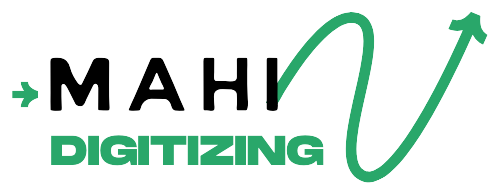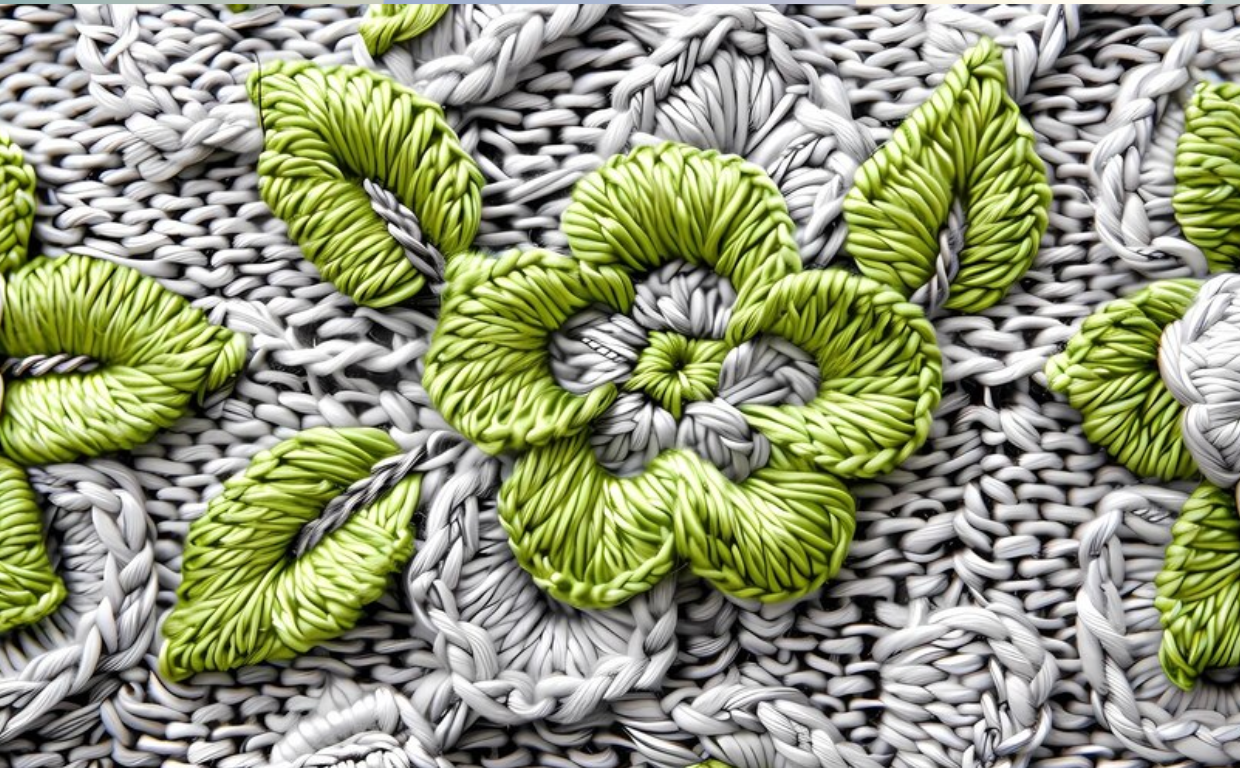When executed correctly, blending chenille applique with embroidery unlocks bold textures, artistic contrasts, and unforgettable designs. Whether you’re crafting varsity jackets, teamwear, or modern streetwear, combining these methods can elevate your look from basic to premium. At Mahi Digitizing, we specialize in preparing flawless, production-ready files for this unique hybrid technique.
Understanding the Role of Each Element
Chenille and embroidery serve different visual and textural purposes. Chenille offers softness, volume, and bold shape, while embroidery contributes fine detail and precision.
Think of chenille as your base — the background shape or letterform — and embroidery as the accent that adds borders, outlines, or graphic detailing.
Layering these techniques helps maintain the impact of chenille while introducing sharp design clarity through embroidery.
Most designers begin by digitizing the chenille shapes first, followed by the embroidery components layered on top or around them.
Proper sequencing ensures both textures show clearly without overlap or misalignment during production.
Mahi Digitizing offers design consultation to help clients visualize how the techniques will interact on fabric.
This understanding forms the foundation for producing clean, impactful mixed-media apparel.
Choosing the Right Fabric and Base
Your base material affects how both chenille and embroidery appear and behave. Thicker, firm fabrics such as felt, wool, or heavyweight cotton are ideal for these patch styles.
These materials offer the stability required to support the weight and density of chenille yarn loops and stitched embroidery threads.
Stretchy or thin fabrics may lead to distortion, misregistration, or puckering under the machine.
For jackets, hoodies, or sweatshirts, ensure the garment is pre-treated and hooped securely before stitching begins.
Chenille needs a solid surface to maintain its plush loops without fraying. Similarly, embroidery stitches require a tensioned base for clean detail.
We help clients evaluate fabric choice before digitizing to avoid rework or low-quality results. Learn more about patch material prep on our blog.
Choosing a strong foundation helps preserve the intended look of blended textures and colors.
Digitizing for Dual-Texture Accuracy
One of the biggest challenges in blending applique with embroidery is creating a digitized file that supports both without clashing.
Chenille designs require special loop fill and directional techniques, while embroidery needs precision stitches like satin and tatami.
A dual-layered file must have separate programming for both types, including a proper run order that aligns with material behavior.
Outlines or borders often help clean up chenille edges and give the design a professional finish when followed with satin embroidery stitches.
Adjustments such as compensation, pull-push correction, and stitch density are essential to achieving a balanced outcome.
Our digitizers at Mahi Digitizing fine-tune every detail to avoid gaps, misalignment, or excess bulk in final production.
Precision at this stage saves money, fabric, and production time while boosting visual appeal.
Layering for Maximum Impact
The key to a successful chenille and embroidery blend lies in how you layer your elements. Embroidery typically works best as a top layer for highlights, borders, or text inside chenille shapes.
If your design includes large letterforms, chenille can fill the space while embroidery defines the edges or initials for emphasis.
Alternatively, embroidery can introduce sharp geometric accents that break up the fluffiness of chenille with contrasting visual texture.
Layering works especially well in mascot logos or sporty icons where the chenille provides weight and the embroidery adds dimension.
Visual hierarchy is important — ensure embroidery doesn’t get lost inside thick chenille and that it doesn’t overpower the plush texture.
At Mahi Digitizing, we help you decide which elements belong where through mockups and design previews.
The result is a patch that looks dynamic, professional, and balanced from every angle.
Color and Thread Selection Tips
Thread and yarn color selection dramatically impacts how your blended patch will look. Chenille yarns come in bold, matte hues, while embroidery threads offer sheen and variety.
Use this contrast to your advantage — pairing muted chenille with metallic or glossy embroidery creates layered highlights that pop.
For logos or mascots, assign darker shades to chenille and brighter or contrasting colors to embroidery outlines or features.
Make sure your color palette aligns with your brand, school, or uniform identity for consistency across garments.
We provide color mapping during the digitizing process so you can approve final looks before production begins.
Refer to our design portfolio to explore successful color combos from past projects.
Well-chosen colors enhance separation between textures and make each part of your patch pop with clarity.
Production Tips for a Clean Stitch-Out
Once your digitized file and materials are ready, it’s time to prepare for production. Use a multi-needle embroidery machine with compatible chenille and embroidery attachments if possible.
Hoop your garment tightly and use appropriate stabilizers based on fabric type and patch location. This prevents puckering and ensures stitch alignment.
Follow the run order precisely — start with chenille base fills, then finish with embroidery detailing to avoid flattening the yarn loops.
Thread breaks, skipped stitches, or excessive thread trimming can affect the look of blended patches. Monitor production closely during the first few runs.
Test-stitch on similar fabric before running final garments. This allows time to tweak density, speed, or machine settings.
Our blog offers more troubleshooting guides and production prep tips for chenille-based patches.
A clean production process ensures each patch maintains clarity, texture, and shape across multiple items.
Conclusion
Blending chenille applique with embroidery requires creativity, planning, and technical precision — but the results are worth it. This layered technique delivers texture, style, and durability that elevate your garment’s look and feel.
From varsity jackets and team uniforms to custom streetwear, chenille + embroidery offers versatility and impact across multiple fashion categories.
It’s important to select the right fabrics, digitize strategically, and layer your design with care to maximize visual clarity and product longevity.
Mahi Digitizing provides tailored solutions for clients looking to produce bold blended patches that capture attention and tell stories.
With expert digitizing and full pre-production support, we help brands and apparel teams stitch confidently with professional results.
Request a quote today and bring your vision to life with perfectly layered chenille and embroidery artwork.
Let your patches stand out — in texture, color, and craftsmanship — with Mahi Digitizing by your side.

